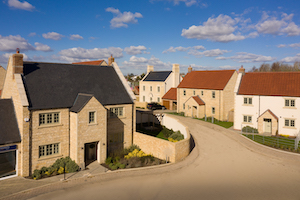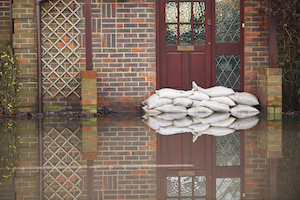Jenny Smith-Andrews, Head of Marketing at aircrete specialist H+H UK Ltd outlines the sustainability arguments for masonry buildings
 H+H has always seen itself as a manufacturer that supports sustainable building – but over time, the definition of the term and priorities for the building industry have shifted. It is good therefore to see some consensus emerging on the objectives for sustainability and how each industry can meet them. H+H supports the principles set out in the UN Sustainability goals and is committed to supporting this agenda.
H+H has always seen itself as a manufacturer that supports sustainable building – but over time, the definition of the term and priorities for the building industry have shifted. It is good therefore to see some consensus emerging on the objectives for sustainability and how each industry can meet them. H+H supports the principles set out in the UN Sustainability goals and is committed to supporting this agenda.
Reducing carbon
 The first, and increasingly urgent, priority is to reduce carbon emissions. When it comes to housebuilding that means a focus on reducing the energy demand of our homes. Home heating alone contributes around 19% of the total CO2 produced in England each year so it is logical that building regulations and the Future Homes Standard are looking to increase further the thermal efficiency of new buildings.
The first, and increasingly urgent, priority is to reduce carbon emissions. When it comes to housebuilding that means a focus on reducing the energy demand of our homes. Home heating alone contributes around 19% of the total CO2 produced in England each year so it is logical that building regulations and the Future Homes Standard are looking to increase further the thermal efficiency of new buildings.
Aircrete has a part to play in this agenda. With its inherent thermal efficiency and very effective airtightness, the material has always been a good choice for energy efficient homes. In fact, H+H was involved well over a decade ago in the development of prototype zero carbon homes.
 More recently, aircrete has been used as the foundation of low energy homes for social housing schemes where fuel costs are a primary concern and Passivhaus designs offer a practical solution.
More recently, aircrete has been used as the foundation of low energy homes for social housing schemes where fuel costs are a primary concern and Passivhaus designs offer a practical solution.
When it comes to revisions to Building Regulations Part L, aircrete is well suited to the newer, more stringent standards and a familiar cavity wall construction will meet all the revisions currently planned.
Operational zero carbon is only one part of the story, however, and attention is increasingly focused on embodied carbon. Moving to net zero manufacturing is challenging and requires the whole supply chain to be working to the same goal.
 H+H has published its roadmap to zero carbon, outlining a journey that will decarbonise its manufacturing and transport processes. However, even in this objective there can be a degree of interpretation and different measurement techniques.
H+H has published its roadmap to zero carbon, outlining a journey that will decarbonise its manufacturing and transport processes. However, even in this objective there can be a degree of interpretation and different measurement techniques.
Our response is to use robust lifecycle analysis methods including all the manufacturing, in use and post-use phases of construction. It is essential to develop commonly agreed standards for calculation to provide a level playing field and ensure that all manufacturers are basing their claims on equivalent data sets.
In its planned journey to zero carbon by 2050, H+H is relying on science-based targets to provide a benchmark against which to measure progress.
A Sustainable future
Low carbon construction is the focus at the moment, but at the same time, lifespan and resilience of new homes must form part of a sustainability strategy.
There is little point in reducing manufacturing carbon if the resulting building only lasts for a few decades and then needs to be entirely replaced. There is an increasingly significant school of thought suggesting that the most sustainable building is one that will last a very, very long time.
And during its lifetime, the building will need to withstand the extremes of a changing climate. In its June 2021 Assessment of UK Climate Risk, the Committee for Climate change cited overheating and flooding as the two most significant risks for the housing sector.
H+H would point to the 150-year lifespan, inherent resilience and thermal mass characteristics of aircrete to further support its position as a material with a secure future in modern, sustainable housing.
For further information on H+H, its products and its sustainability criteria, go to www.hhcelcon.co.uk

